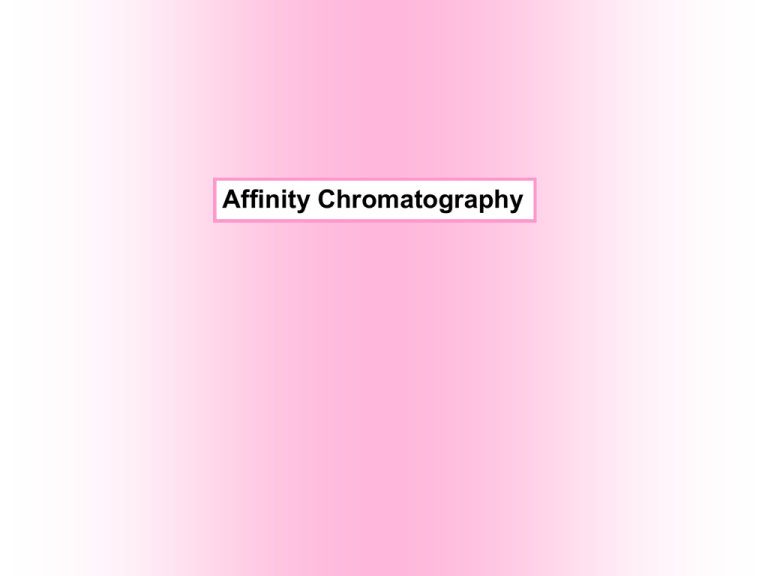9 Affinity chromatography
advertisement

Affinity Chromatography Affinity Chromatography Dates back to 1910 Modern method was first published in 1967 Instrumental method started in 1978 Involves the interaction of a ligand with the solute of interest Supporting phase Spacer arm Ligand Site of interaction Affinity Chromatography The separation is conducted in 4 basic steps Sample introduction Adsorption of components of interest Removal of impurities Retrieval of the target compounds = regeneration of the column The supporting phase Supporting phase Spacer arm Ligand Site of interaction The supporting phase should be rigid, stable and have a high surface area Agarose is the most popular but cellulose and polyacrylamide can be used Agarose can be used at moderately high pressures and over a pH range of 4-9 Cross-linking can be used to extend the pressure range Sepharose is a bead formed of agarose gel The spacer arm Supporting phase Spacer arm Ligand Site of interaction The spacer arm is a carbon chain interposed between ligand and supporting phase Used when active site is located deep within a sample molecule If too long, it can interact with sample species on its own (London interactions) If too short, ligand can’t reach active site on sample molecule The ligand Supporting phase Spacer arm Ligand Site of interaction Two general types of ligands Specific Binds only to one species Antibody / antigen General Group specific Binds to specific groups on target species The ligand The ligand must be covalently bound to the supporting phase to create a stable SP Attachment can result in the ligand no longer being active Ideal case Binding site is readily available Alteration of ligand structure Poor orientation or spacing Site is not accessible The ligand Samples Types of ligands used Enzymes substrate, inhibitor, cofactor Antibody antigen, virus, cell Lectin polysaccharide, glycoprotein, cell receptor Nucleic acid polymerase, complementary base sequence, nucleic acid, binding protein Hormones receptor, carrier protein Step elution Since only the target protein binds, step elution will not co-elute other sample components Elution modes Use of competitors Find something that has a stronger affinity for your sample than the ligand Elution modes Use of competitors Find something that has a stronger affinity for the ligand than your sample Elution modes Use of chaotropic or denaturing agents Change conformation of sample Change conformation of ligand











